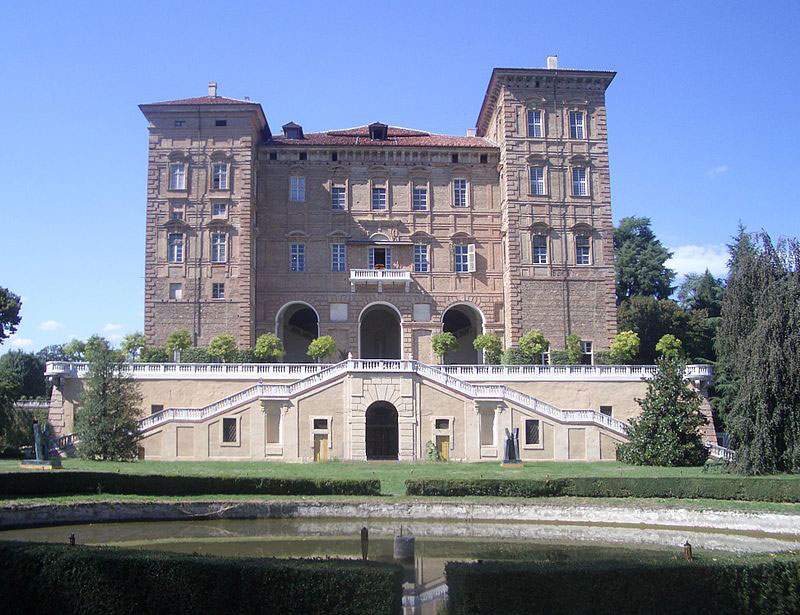Piedmont Museums, a plan to enhance unpublished works from repositories
A conservation and enhancement program is dedicated to the hidden heritage of Piedmont’s museum deposits: it is part of the Sleeping Beauty project and is promoted and financed by MiBACT’s General Directorate of Museums. In 2020, the General Directorate of Museums allocated the total amount of 40 thousand euros to develop a detailed plan of interventions involving works kept in the deposits of Palazzo Carignano, Villa della Regina, Agliè Castle and Racconigi Castle.
More than 180 pieces, to which are added albums of photographs with almost 700 images, that make up an interesting and significant corpus, heterogeneous in terms of materials, execution techniques, dating and scope of geographical origin, and representative of the multifaceted reality that characterizes the heritage managed by the Regional Museums Directorate.
Elaborated and carried out under the direction of the staff working in the Restoration Laboratory of Palazzo Carignano, the conservation interventions have come to an end, and activities are currently being studied to publicize the uniqueness and beauty of these works, unpublished to the public, but for the most part little known even to insiders. Compatible with the evolving epidemiological framework, meetings, exhibitions, thematic visits and opportunities for in-depth study are planned in the museum venues, in parallel with streaming lectures.
As far as Palazzo Carignano is concerned, two portions of the paneling have undergone restoration as part of the initiative: one, painted by Giovanni Battista Crosato, depicts Apollo and Clytia taken from Book IV from Ovid’s Metamorphoses; the other features putti playing made in monochrome by an unknown author. Both panels most likely decorated the rooms on the piano nobile of the Appartamento di Mezzogiorno of the Princes of Carignano and were donated by King Charles Emmanuel III of Sardinia as a dowry for the wedding, celebrated in 1740, between the Prince of Carignano Luigi Vittorio and Christina Enrichetta of Hesse-Rheinfels-Rotenburg, sister of Polyxena, the sovereign’s second wife who had died a few years earlier.
At the Queen’s Villa, the protagonist was the restoration of a large canvas, datable to the last quarter of the 17th century. The subject is that of the Four Seasons, represented through allegorical figures, distinguished by symbols such as flowers for spring, ears of corn for summer, dry branches for winter, and grape racemes for autumn, over which stands the personification of time, a bearded, winged male figure wielding a scythe. Attributed to Giovanni Battista Brambilla, a pupil of Charles Dauphin active for the Savoy court in the second half of the 17th century, the painting is documented in 1845 in the center of the ceiling of a room on the second floor of the Villa della Regina, but its original location remains unknown.
At Agliè Castle, attention was focused on papiers peints, splendid paper tapestries dating from the years when Charles Felix (1824-1831) and his consort Maria Christina of Bourbon-Naples (1824-1849) stayed at the residence. In addition to the examples that can still be admired in several rooms, many rolls of panels and borders from the same period are preserved in the storerooms, alongside some of later date, for a combined total of 1,860 linear meters of material offering as many as 177 different decorative modules. As part of the initiative, it was possible to carry out conservation maintenance, with cleaning and consolidation operations, and conditioning of the painted papers, as well as to forecast better conservation conditions and carry out technical filing.
Finally, as far as Racconigi Castle is concerned, two nuclei of works were identified: one intervention focused on weapons and ethnographic artifacts from the Armory, a storage room on the ground floor of the east wing that holds about 450 pieces related to the travels and diplomatic visits attended by the last two kings of Italy, Victor Emmanuel III and Umberto II. A suit of armor of Ottoman manufacture and five weapons, one of European, specifically Swedish, and four of non-European, African and Ottoman-Turkish origin, were selected and restored, adding yet another piece to a broader program to reorganize the collection aimed at including its wonders in the tour itinerary. Another intervention, on the other hand, focused on the Castle’s vast collection of historical photographs with more than 18,000 shots. Operations of conditioning and conservative maintenance involved ten albums, for a set of 696 photographs relating to the stays that Umberto II had the opportunity to spend in Northern Europe, Africa and South America between the 1920s and 1930s. On the other hand, that for photography was an interest particularly felt in the family and cultivated especially by his mother, Queen Elena, a passionate photographer who used to personally print her own shots, so much so that she had a special cabinet set up for developing the shots on the second mezzanine floor of the Castle.
Pictured is the Castle of Agliè. Ph.Credit
 |
| Piedmont Museums, a plan to enhance unpublished works from repositories |
Warning: the translation into English of the original Italian article was created using automatic tools. We undertake to review all articles, but we do not guarantee the total absence of inaccuracies in the translation due to the program. You can find the original by clicking on the ITA button. If you find any mistake,please contact us.




























